Top 10 Threatening Animals that Deserve to Go Extinct
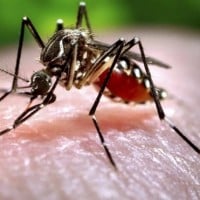 Spanish for "small fly," mosquitoes are insects that have been known to cause various diseases. A sample of diseases caused by mosquitoes: malaria, yellow fever, Chikungunya, West Nile virus, dengue fever, filariasis, Zika virus.
Spanish for "small fly," mosquitoes are insects that have been known to cause various diseases. A sample of diseases caused by mosquitoes: malaria, yellow fever, Chikungunya, West Nile virus, dengue fever, filariasis, Zika virus. All for killing all mosquitoes say aye.
 The raccoon, sometimes spelled racoon, also known as the common raccoon, North American raccoon, northern raccoon and colloquially as coon, is a medium-sized mammal native to North America.
The raccoon, sometimes spelled racoon, also known as the common raccoon, North American raccoon, northern raccoon and colloquially as coon, is a medium-sized mammal native to North America.
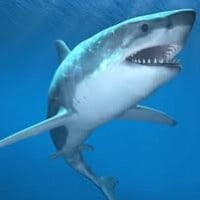 Sharks are a group of elasmobranch fish characterized by a cartilaginous skeleton, five to seven gill slits on the sides of the head, and pectoral fins that are not fused to the head. Modern sharks are classified within the clade Selachimorpha (or Selachii) and are the sister group to the rays. However, the term "shark" has also been (incorrectly) used to refer to extinct members of the subclass Elasmobranchii, which are technically outside the Selachimorpha clade. Notable examples of improper classification include Cladoselache, and various other members of the Chondrichthyes class like the holocephalid eugenedontidans.
Sharks are a group of elasmobranch fish characterized by a cartilaginous skeleton, five to seven gill slits on the sides of the head, and pectoral fins that are not fused to the head. Modern sharks are classified within the clade Selachimorpha (or Selachii) and are the sister group to the rays. However, the term "shark" has also been (incorrectly) used to refer to extinct members of the subclass Elasmobranchii, which are technically outside the Selachimorpha clade. Notable examples of improper classification include Cladoselache, and various other members of the Chondrichthyes class like the holocephalid eugenedontidans. They only kill 10 people per year.
The venomous ones that will attack for no reason
They help the rodent population
 Crocodiles (family Crocodylidae) or true crocodiles are large semiaquatic reptiles that live throughout the tropics in Africa, Asia, the Americas and Australia. The term crocodile is sometimes used even more loosely to include all extant members of the order Crocodilia, which includes the alligators and caimans (family Alligatoridae), the gharial and false gharial (family Gavialidae) among other extinct taxa. ...read more.
Crocodiles (family Crocodylidae) or true crocodiles are large semiaquatic reptiles that live throughout the tropics in Africa, Asia, the Americas and Australia. The term crocodile is sometimes used even more loosely to include all extant members of the order Crocodilia, which includes the alligators and caimans (family Alligatoridae), the gharial and false gharial (family Gavialidae) among other extinct taxa. ...read more.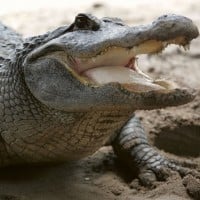 An alligator is a crocodilian in the genus Alligator of the family Alligatoridae. The two living species are the American alligator and the Chinese alligator. Additionally, several extinct species of alligator are known from fossil remains. Alligators have long existed since the Oligocene epoch 37 million years ago.
An alligator is a crocodilian in the genus Alligator of the family Alligatoridae. The two living species are the American alligator and the Chinese alligator. Additionally, several extinct species of alligator are known from fossil remains. Alligators have long existed since the Oligocene epoch 37 million years ago.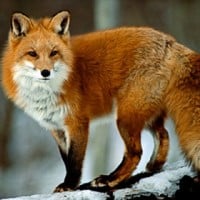 The red fox (Vulpes vulpes) is the largest of the true foxes. It has the greatest geographic range of all members of the Carnivora family, being present across the entire Northern Hemisphere from the Arctic Circle to North Africa, North America and Eurasia.
The red fox (Vulpes vulpes) is the largest of the true foxes. It has the greatest geographic range of all members of the Carnivora family, being present across the entire Northern Hemisphere from the Arctic Circle to North Africa, North America and Eurasia.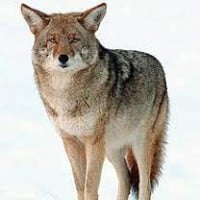 Coyotes are canines native to North and Central America. They are highly adaptable and can thrive in a variety of environments, from forests and grasslands to urban areas. Coyotes have a similar appearance to domestic dogs but are typically smaller in size, with a bushy tail, erect ears, and a pointed muzzle. They are opportunistic omnivores, feeding on a diverse diet that includes small mammals, birds, insects, and even plants. Known for their vocalizations, coyotes communicate using a range of howls, barks, and yips. They play a crucial role in ecosystems by controlling populations of rodents and other small animals.
Coyotes are canines native to North and Central America. They are highly adaptable and can thrive in a variety of environments, from forests and grasslands to urban areas. Coyotes have a similar appearance to domestic dogs but are typically smaller in size, with a bushy tail, erect ears, and a pointed muzzle. They are opportunistic omnivores, feeding on a diverse diet that includes small mammals, birds, insects, and even plants. Known for their vocalizations, coyotes communicate using a range of howls, barks, and yips. They play a crucial role in ecosystems by controlling populations of rodents and other small animals. The blobfish is a deep sea fish of the family Psychrolutidae. It inhabits the deep waters off the coasts of mainland Australia and Tasmania, as well as the waters of New Zealand.
The blobfish is a deep sea fish of the family Psychrolutidae. It inhabits the deep waters off the coasts of mainland Australia and Tasmania, as well as the waters of New Zealand. The Blobfish must be protected at all costs.
That's one ugly and creepy looking fish.
Its beautiful! Look at that handsome face
and pretty eyes
and rock hard chest
and rippling abs
and the tightest ass
and those sculpted calves
and those bulging quads
and the perfect bod
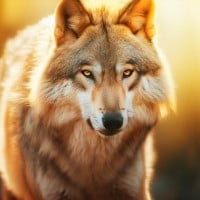 The wolf (Canis lupus), also known as the gray or grey wolf, is a large canine native to Eurasia and North America. Over thirty subspecies of Canis lupus have been recognized, with gray wolves comprising the wild subspecies. As the largest extant member of the Canidae family, the wolf is distinguished... read more
The wolf (Canis lupus), also known as the gray or grey wolf, is a large canine native to Eurasia and North America. Over thirty subspecies of Canis lupus have been recognized, with gray wolves comprising the wild subspecies. As the largest extant member of the Canidae family, the wolf is distinguished... read more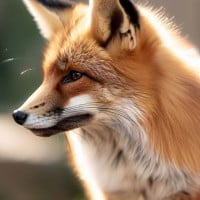 Foxes are small to medium sized animals and belong to the Canidae family along with other animals such as jackals, wolves, and domestic dogs. There are 37 species of fox but only 12 are considered true Vulpes. A fox's prey is small mammals, birds, reptiles, frogs, eggs, insects, worms, fish, crabs, mollusks, fruits, berries, vegetables, seeds, fungi and carrion. Some of the best known species of fox are the fennec fox, red fox, gray fox, arctic fox, and the swift fox. Foxes are considered one of the most adaptable animals because it can live on almost every continent. Foxes range from all different colors and habitats. Foxes can be a deep red, a light tan, or white. If you are lucky enough you ...read more.
Foxes are small to medium sized animals and belong to the Canidae family along with other animals such as jackals, wolves, and domestic dogs. There are 37 species of fox but only 12 are considered true Vulpes. A fox's prey is small mammals, birds, reptiles, frogs, eggs, insects, worms, fish, crabs, mollusks, fruits, berries, vegetables, seeds, fungi and carrion. Some of the best known species of fox are the fennec fox, red fox, gray fox, arctic fox, and the swift fox. Foxes are considered one of the most adaptable animals because it can live on almost every continent. Foxes range from all different colors and habitats. Foxes can be a deep red, a light tan, or white. If you are lucky enough you ...read more.
 The wolf (Canis lupus), also known as the gray or grey wolf, is a large canine native to Eurasia and North America. Over thirty subspecies of Canis lupus have been recognized, with gray wolves comprising the wild subspecies. As the largest extant member of the Canidae family, the wolf is distinguished... read more
The wolf (Canis lupus), also known as the gray or grey wolf, is a large canine native to Eurasia and North America. Over thirty subspecies of Canis lupus have been recognized, with gray wolves comprising the wild subspecies. As the largest extant member of the Canidae family, the wolf is distinguished... read more The common hippopotamus, or hippo, is a large, mostly herbivorous mammal in sub-Saharan Africa, and one of only two extant species in the family Hippopotamidae, the other being the pygmy hippopotamus.
The common hippopotamus, or hippo, is a large, mostly herbivorous mammal in sub-Saharan Africa, and one of only two extant species in the family Hippopotamidae, the other being the pygmy hippopotamus.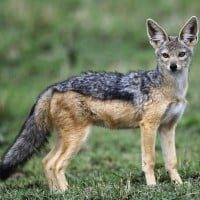 The jackal is a small omnivorous mammal of the genus Canis, which also includes the wolf and dog. While the word "jackal" has historically been used for many small canids, in modern use it most commonly refers to three species: the closely related black-backed jackal and side-striped jackal of sub-Saharan Africa, and the golden jackal of south-central Eurasia.
The jackal is a small omnivorous mammal of the genus Canis, which also includes the wolf and dog. While the word "jackal" has historically been used for many small canids, in modern use it most commonly refers to three species: the closely related black-backed jackal and side-striped jackal of sub-Saharan Africa, and the golden jackal of south-central Eurasia.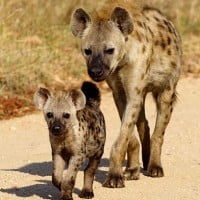 Hyenas or hyaenas are any feliform carnivoran mammals of the family Hyaenidae /haɪˈɛnᵻdiː/. With only four extant species, it is the fifth-smallest biological family in the Carnivora, and one of the smallest in the class Mammalia.
Hyenas or hyaenas are any feliform carnivoran mammals of the family Hyaenidae /haɪˈɛnᵻdiː/. With only four extant species, it is the fifth-smallest biological family in the Carnivora, and one of the smallest in the class Mammalia.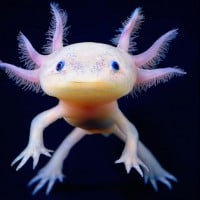 The axolotl, Ambystoma mexicanum, also known as the Mexican walking fish, is a neotenic salamander related to the tiger salamander. Although the axolotl is colloquially known as a "walking fish", it is not a fish, but an amphibian. The axolotl is only native to Lake Xochimilco and Lake Chalco in Mexico. Axolotls in the wild are mostly grassy brown or black, but in captivity, they can even glow in blue light.
The axolotl, Ambystoma mexicanum, also known as the Mexican walking fish, is a neotenic salamander related to the tiger salamander. Although the axolotl is colloquially known as a "walking fish", it is not a fish, but an amphibian. The axolotl is only native to Lake Xochimilco and Lake Chalco in Mexico. Axolotls in the wild are mostly grassy brown or black, but in captivity, they can even glow in blue light. That thing is not cute its ugly and stupid.
Aw, but it's so cute

 Humans (Homo sapiens) are the most abundant and widespread species of primate, characterized by bipedalism and large, complex brains. This has enabled the development of advanced tools, culture, and language. Humans are highly social and tend to live in complex social structures composed of many cooperating and competing groups, from families and kinship networks to political states. Social interactions between humans have established a wide variety of values, social norms, and rituals, which bolster human society. Curiosity and the human desire to understand and influence the environment and to explain and manipulate phenomena have motivated humanity's development of science, philosophy, mythology, ...read more.
Humans (Homo sapiens) are the most abundant and widespread species of primate, characterized by bipedalism and large, complex brains. This has enabled the development of advanced tools, culture, and language. Humans are highly social and tend to live in complex social structures composed of many cooperating and competing groups, from families and kinship networks to political states. Social interactions between humans have established a wide variety of values, social norms, and rituals, which bolster human society. Curiosity and the human desire to understand and influence the environment and to explain and manipulate phenomena have motivated humanity's development of science, philosophy, mythology, ...read more.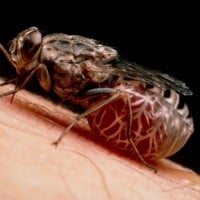
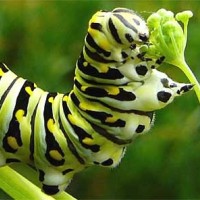
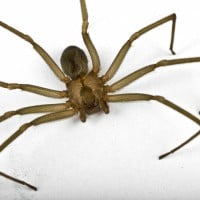 A venomous spider native to the central and southern United States, the Brown Recluse is known for its reclusive habits and preference for dark, undisturbed places. Its venom can cause necrotic skin lesions in humans, making it a species to be cautious of when encountered.
A venomous spider native to the central and southern United States, the Brown Recluse is known for its reclusive habits and preference for dark, undisturbed places. Its venom can cause necrotic skin lesions in humans, making it a species to be cautious of when encountered. These frightening "animals" have no use for the world other than for scaring people. They don't deserve to live; the world will be better off without these terrifying things.
 Tarantulas comprise a group of large and often hairy arachnids belonging to the Theraphosidae family of spiders, of which approximately 900 species have been identified.
Tarantulas comprise a group of large and often hairy arachnids belonging to the Theraphosidae family of spiders, of which approximately 900 species have been identified. These demonic spawns of Satan deserve no life. They need to be extinct to free the world from their horrifying and repulsive appearance.